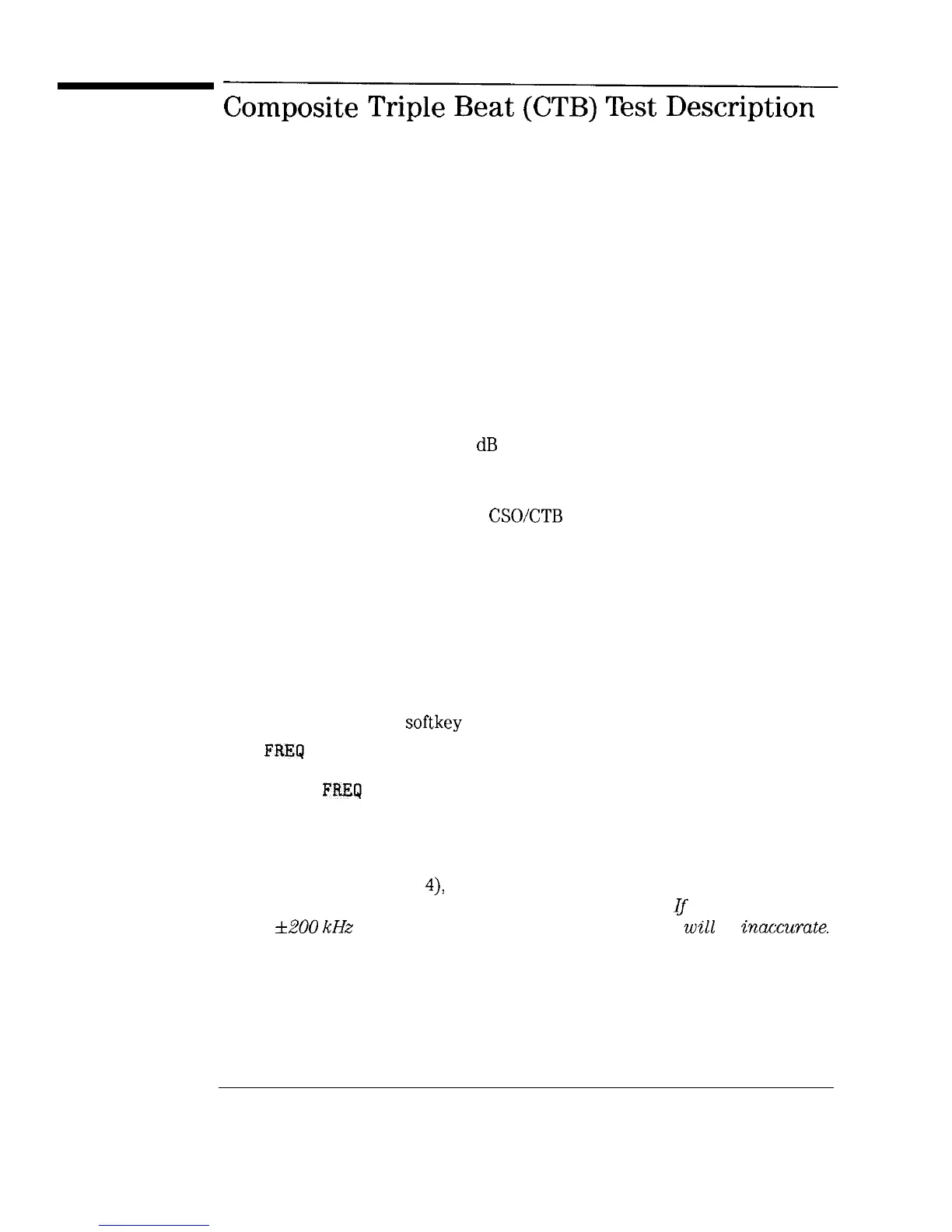I
-
Composite Triple
Beat
(CTB)
Test
Description
Two methods of measuring CTB are described here:
l channel CTB
l system CTB
The analyzer measures the total cable TV system power and adjusts its input
attenuation for optimum performance (refer to the graphs in Chapter 9).
Distortion near noise corrections are used to more accurately measure
distortion products less than 10
dB
above the analyzer noise.
1. Channel CTB
2. System CTB
The CTB beat appears directly under the visual carrier. Therefore, turning
the carrier off during the channel
CSOKTB
test is the only method of testing
the CTB of each channel.
The marker does a local peak search to assure it is measuring the peak of the
beat.
The composite triple beat (CTB) test measures the relative level of third
order inter-modulation products that align in frequency with the carrier
under test. System CTB testing is intended to be performed on only one
channel and is performed at an offset from the channel specified using the
SYS BTS TST CHNL
softkey in the Setup menu. The offset is specified by
CTB
FREQ
OFFSET ; the default value is 6 MHz.
Setting CTB
FEEQ
OFFSET to -6 MHz will allow testing 6 MHz below the
beats test channels. The default location for measuring beats with the
analyzer is in the unused frequency band between channels 4 and 5.
In system measurement mode, the analyzer Erst measures the peak level of
the test channel (channel
4),
and then measures any composite triple beat
products in the frequency gap between channels 4 and 5.
If
there is a signal
within
1t200
kHz
of the CTB test channel, the CTB results will be
inacmrate.
If you are broadcasting a signal between channels 4 and 5, you must either
turn off the signal or change the frequency at which CTB is tested.
The CTB measurement is done as follows:
8-18

